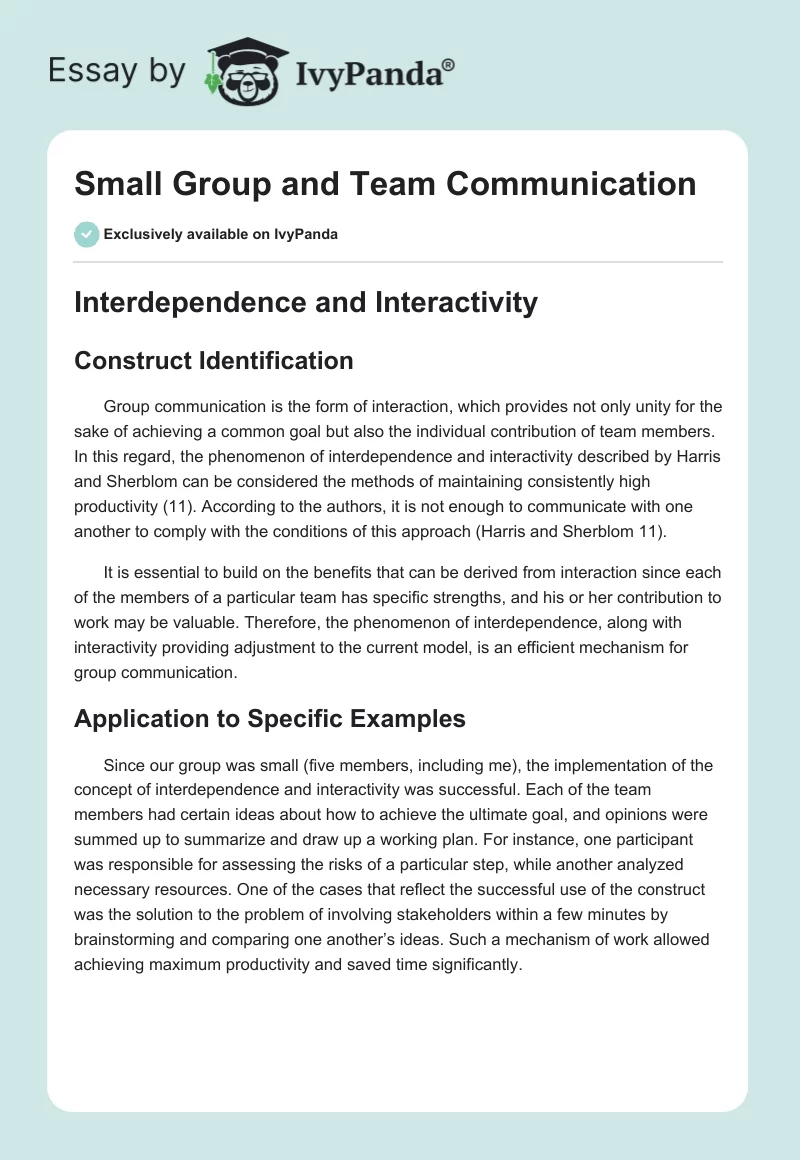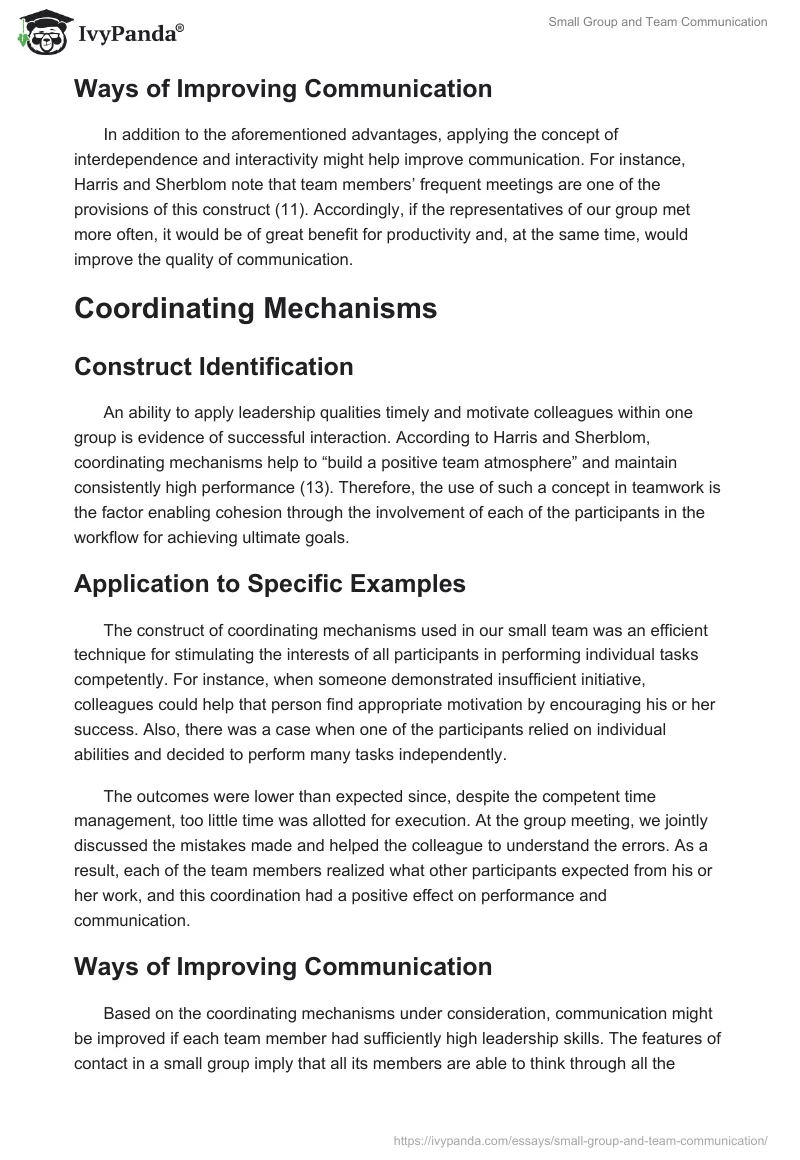Interdependence and Interactivity
Construct Identification
Group communication is the form of interaction, which provides not only unity for the sake of achieving a common goal but also the individual contribution of team members. In this regard, the phenomenon of interdependence and interactivity described by Harris and Sherblom can be considered the methods of maintaining consistently high productivity (11). According to the authors, it is not enough to communicate with one another to comply with the conditions of this approach (Harris and Sherblom 11).
It is essential to build on the benefits that can be derived from interaction since each of the members of a particular team has specific strengths, and his or her contribution to work may be valuable. Therefore, the phenomenon of interdependence, along with interactivity providing adjustment to the current model, is an efficient mechanism for group communication.
Application to Specific Examples
Since our group was small (five members, including me), the implementation of the concept of interdependence and interactivity was successful. Each of the team members had certain ideas about how to achieve the ultimate goal, and opinions were summed up to summarize and draw up a working plan. For instance, one participant was responsible for assessing the risks of a particular step, while another analyzed necessary resources. One of the cases that reflect the successful use of the construct was the solution to the problem of involving stakeholders within a few minutes by brainstorming and comparing one another’s ideas. Such a mechanism of work allowed achieving maximum productivity and saved time significantly.
Ways of Improving Communication
In addition to the aforementioned advantages, applying the concept of interdependence and interactivity might help improve communication. For instance, Harris and Sherblom note that team members’ frequent meetings are one of the provisions of this construct (11). Accordingly, if the representatives of our group met more often, it would be of great benefit for productivity and, at the same time, would improve the quality of communication.
Coordinating Mechanisms
Construct Identification
An ability to apply leadership qualities timely and motivate colleagues within one group is evidence of successful interaction. According to Harris and Sherblom, coordinating mechanisms help to “build a positive team atmosphere” and maintain consistently high performance (13). Therefore, the use of such a concept in teamwork is the factor enabling cohesion through the involvement of each of the participants in the workflow for achieving ultimate goals.
Application to Specific Examples
The construct of coordinating mechanisms used in our small team was an efficient technique for stimulating the interests of all participants in performing individual tasks competently. For instance, when someone demonstrated insufficient initiative, colleagues could help that person find appropriate motivation by encouraging his or her success. Also, there was a case when one of the participants relied on individual abilities and decided to perform many tasks independently.
The outcomes were lower than expected since, despite the competent time management, too little time was allotted for execution. At the group meeting, we jointly discussed the mistakes made and helped the colleague to understand the errors. As a result, each of the team members realized what other participants expected from his or her work, and this coordination had a positive effect on performance and communication.
Ways of Improving Communication
Based on the coordinating mechanisms under consideration, communication might be improved if each team member had sufficiently high leadership skills. The features of contact in a small group imply that all its members are able to think through all the stages of work independently and assess the range of tasks competently. If necessary, the exchange of experience could be one of the ways of achieving more effective interaction. As Harris and Sherblom argue, group participants have to accept feedback and take into account colleagues’ opinions regarding individual productivity. Therefore, leadership training and the exchange of views are those factors that can improve the quality of teamwork.
Work Cited
Harris, Thomas E., and John C. Sherblom. Small Group and Team Communication. 5th ed., Waveland Press, 2018.


